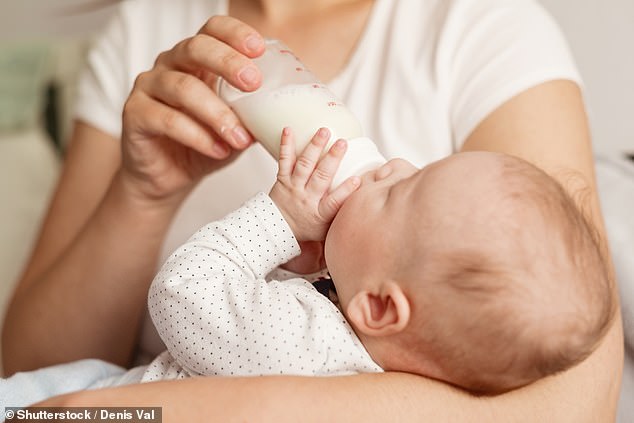I’m a paramedic and this is the one ‘red flag’ that parents often miss that could mean your child is very dehydrated
An ex-paramedic has warned parents of babies and young children to look out for an overlooked ‘red flag’ that she says is not being taken as seriously as it should by many.
Nikki Jurcutz, founder of a parenting organization Tiny Hearts Educationsaid that if a baby drinks less than normal and wets his diapers, it could be a sign that he is dehydrated.
The mother of two said children can become dehydrated much more quickly than adults, especially when they are sick.
If a child is not feeling well, parents should monitor how often the child eats, drinks and urinates to keep track of fluids moving in and out.
She said that while it may be normal for a child to not want to eat or drink as much when they are sick, it is important for parents to know the signs and symptoms of dehydration.
A former paramedic has revealed the ‘red flags’ often overlooked by parents of young children that could be a sign a child is dehydrated (stock image)

Mother of two Nikki Jurcutz (pictured), found from Tiny Hearts Education, said children who eat, drink and urinate less may be dehydrated
‘Don’t ignore this sign. If your baby is drinking less and you notice that the number of wet diapers is less than normal, I want you to pay more attention,’ after to read the Tiny Hearts Instagram page.
‘You have to pay extra attention to this when your little ones are sick. It’s normal that they don’t want to eat as much, and sometimes they don’t drink as much as normal either.’
Nikki listed the additional signs of dehydration to look out for, in addition to decreased thirst, appetite and urination frequency.
Dry lips, tongue, mouth and throat, nausea, headache, darker or smelly urine, no tears when crying, faster breathing and a sunken fontanelle or eyes are things parents should look out for.
According to a Tiny Hearts’ bloggingThere are many ways a child can become dehydrated, such as not eating or drinking enough, feeling sick, exercising or running around a lot, vomiting and diarrhea, or by taking certain medications.
The best way to treat mild dehydration in little ones is to give them more fluids to drink by offering oral rehydration solutions such as Hydralyte or Gastrolyte, chilled boiled water or even diluted apple juice for 12 hours.
If they are younger than six months, Nikki recommends offering breast or formula feeding as often as possible and taking them to a doctor.
For older children over 10 kg, it is recommended to give a cup of water or an oral rehydration solution every four hours – extra if they experience vomiting or diarrhea.
Children who can eat solids should be given foods rich in liquids, such as watermelon, jelly, yogurt, soup and custard.
According to Nikki, wet diapers are a good indicator of a child’s hydration and should be odorless and clear or pale in color.

Children can dehydrate more quickly than adults. If a child is not feeling well, parents should monitor how often the child eats, drinks and urinates to keep track of fluids moving in and out
Strong-smelling or dark-colored urine and fresh blood are cause for concern, as are “urates,” rust-colored stains in the diaper after four days of age.
Parents can also do a squeeze test to check their little one’s hydration level.
Gently pinch the skin on the back of the wrist. If it bounces back slowly, the skin may be dehydrated.
Babies under six months of age or children with long-term illness should be taken to a doctor if dehydration is suspected.
There are many signs of severe dehydration, such as lethargy and drowsiness, irritability, extreme thirst, paleness, confusion, rapid heart rate, and cold to the touch.
‘A good point to remember: if your little one is very thirsty, it’s likely he’s already dehydrated. Ultimately, as parents, you know your little one best,” the post said.
“And if you’re concerned, it’s time to listen to that parental instinct and get your little one seen by a doctor.”
